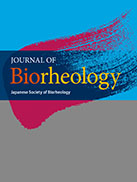Volume 37, Issue 1
Displaying 1-5 of 5 articles from this issue
- |<
- <
- 1
- >
- >|
Preface
-
2023 Volume 37 Issue 1 Pages 1
Published: 2023
Released on J-STAGE: August 29, 2023
Download PDF (80K)
ORIGINAL ARTICLE
-
2023 Volume 37 Issue 1 Pages 2-8
Published: 2023
Released on J-STAGE: August 29, 2023
Download PDF (1138K)
BRIEF COMMUNICATION
-
2023 Volume 37 Issue 1 Pages 9-12
Published: 2023
Released on J-STAGE: August 29, 2023
Download PDF (906K)
REVIEW ARTICLE
-
2023 Volume 37 Issue 1 Pages 13-20
Published: 2023
Released on J-STAGE: August 29, 2023
Download PDF (638K)
ORIGINAL ARTICLE
-
2023 Volume 37 Issue 1 Pages 21-34
Published: 2023
Released on J-STAGE: August 29, 2023
Download PDF (4102K)
- |<
- <
- 1
- >
- >|
